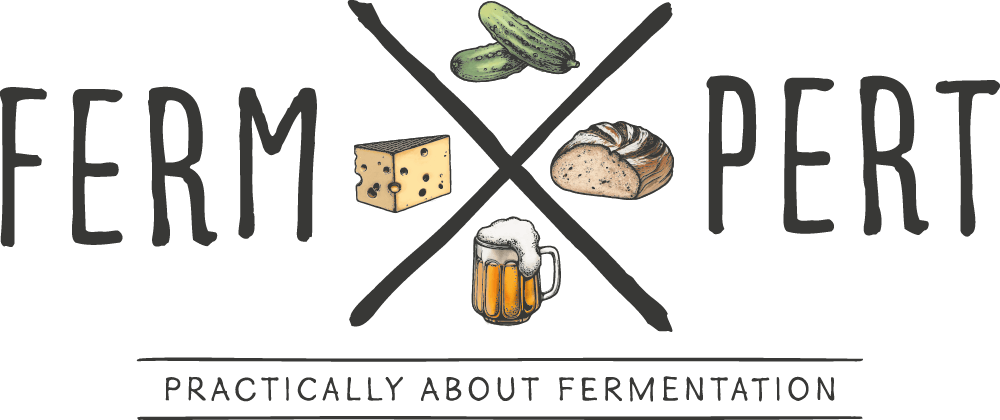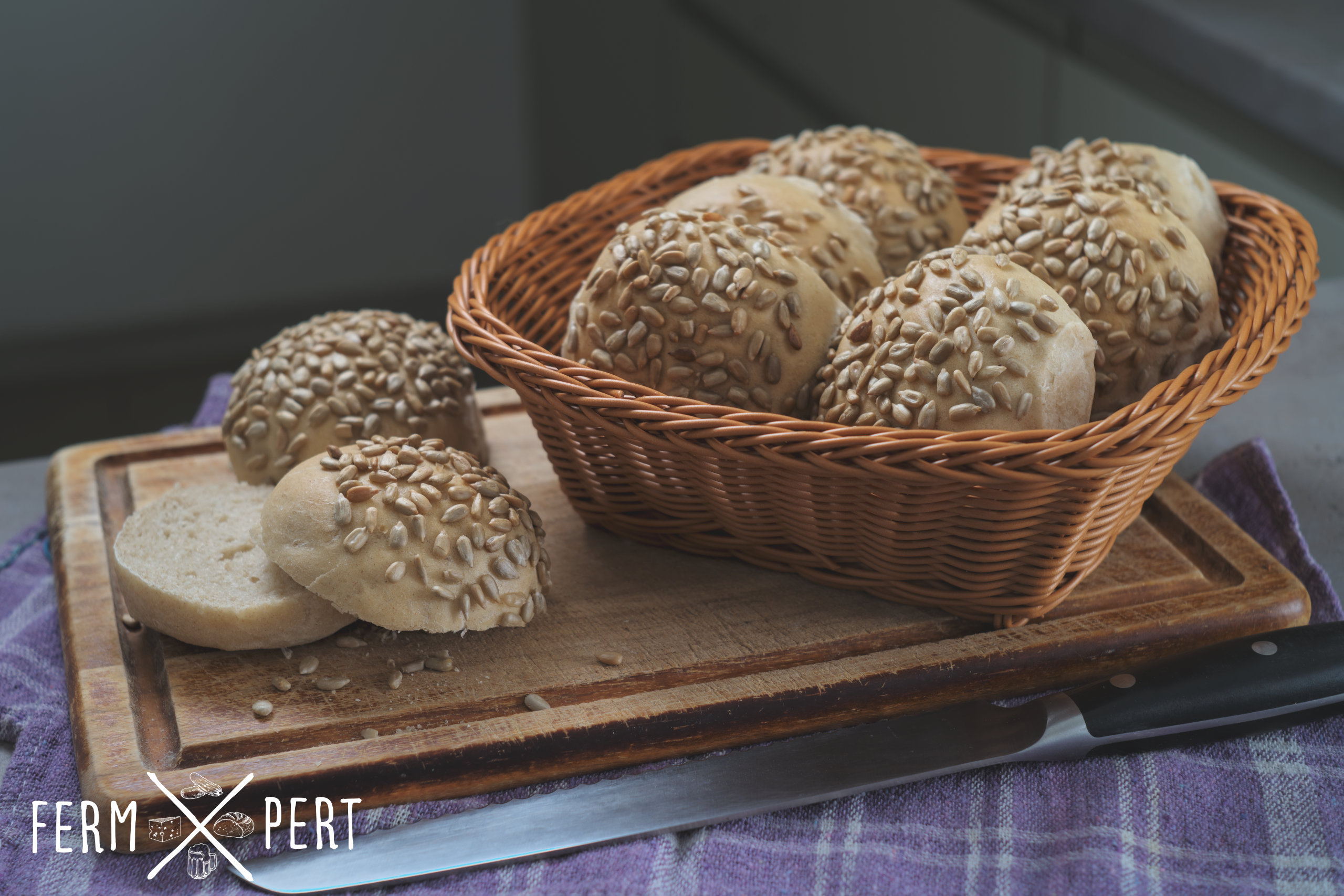Rye and sunflower are an incredibly tasty combination. And it’s even better when it takes form of a soft and fragrant roll. Below, I present a recipe for rolls exactly like that.
Recipe
- 400 g strong white wheat flour
- 100 g white rye flour
- 300 g water
- 10 g fresh yeast or 5 g dried yeast
- 12 g salt
- sunflower seeds
Combine all the ingredients except the sunflower seeds. Knead the dough by hand or in a stand mixer for 10 minutes, until a sufficiently strong gluten network is formed. Primary fermentation: around 1 hour, until the dough’s volume doubles. Knock the dough back and divide into 10 equal portions. Form rolls, wet each on one side and cover with sunflower seeds. Leave to final prove on a baking sheet, again until the rolls double in volume. Bake at 200°C (392°F) for around 15 minutes, until the rolls start to turn light golden.
Video Transcription
Rye bread and roasted sunflower seeds. I think this is one of the most delicious combinations out there. Today I’m baking some rye rolls with sunflower seeds. Full written recipe can be found on the blog.
What do you consider the best flour and seeds combination? Let me know in the comments.
The ingredients are pretty simple. Strong white wheat flour is the base, to which I’ll add some white rye flour. Apart from these, I’ll use salt, water and yeast. I’ll top the rolls with sunflower seeds.
I mix the dry ingredients first. Water and yeast go into the bowl. I give them a rough stir to disperse the yeast. Then I add the flour and salt mix. I mix everything together, then knead on the counter until there’s sufficient gluten formation. The dough is on the hard side so it takes some effort to knead it. On the other hand, it’s not particularly sticky. A windowpane test confirms that there’s enough gluten to hold the rolls together. It’s not the strongest gluten network, but it’ll do. I round the dough, put it in the bowl and let it prove, covered, until it doubles in volume.
The fermentation starts as soon as water, yeast and flour are mixed together. Amylase, an enzyme present in wheat and rye, breaks starch down to simpler carbohydrates, maltose being the one that yeast is capable of metabolysing. It is converted into ethanol and carbon dioxide. The latter gets trapped by the gluten network, allowing the dough to rise.
The dough has risen nicely. I flip it onto the counter and knock it back. I weigh it and proceed to divide it into ten equal portions. I shape the rolls by flattening each dough piece, folding its edges inwards and forming it into a ball by rolling it with my palm against the counter. I sprinkle some flour on one side of the ball to prevent it from sticking to my hand. I wet the other side and then place it in a bowl filled with sunflower seeds. The seeds stick to the dough’s wet surface. Here are all of the rolls. The placement on the sheet is suboptimal; they will definitely touch as they prove. My bad. Speaking of proving, it’s time to final prove these rolls. I let them rest until they double in size again.
When they’re nicely inflated, I place them in a preheated oven and let them bake until they just start to turn golden. Here’s what they look like after baking.
The rolls taste best when they’re still warm. I’ll definitely have more than one tonight. They’re soft and spongy. The crumb has a tight structure, slightly darker than regular white wheat bread. The aroma is amazing. The taste is complex and harmonious. Rye’s earthy notes are such a great company to roasted sunflower seeds. Delicious!

